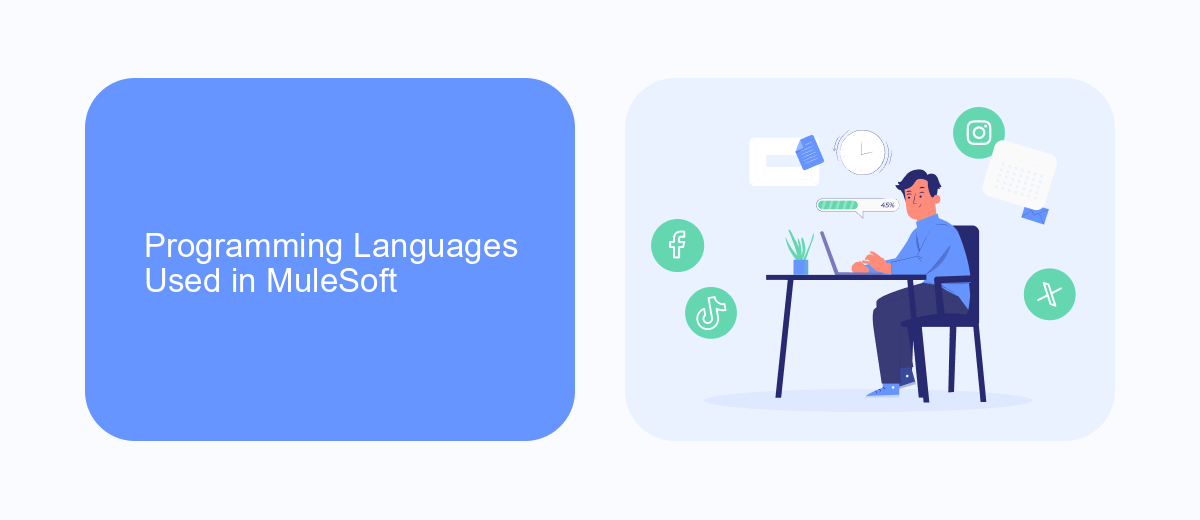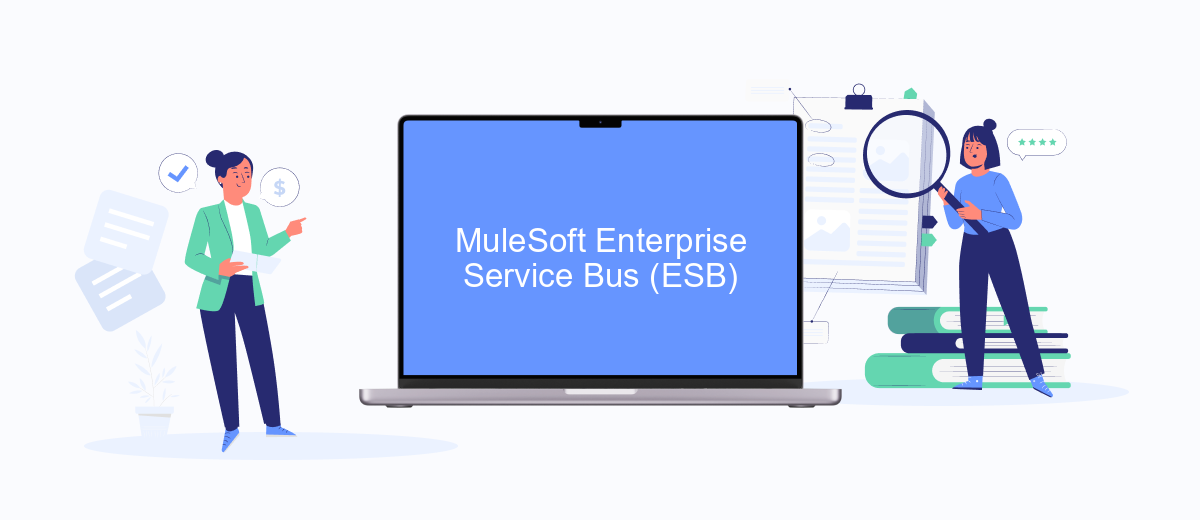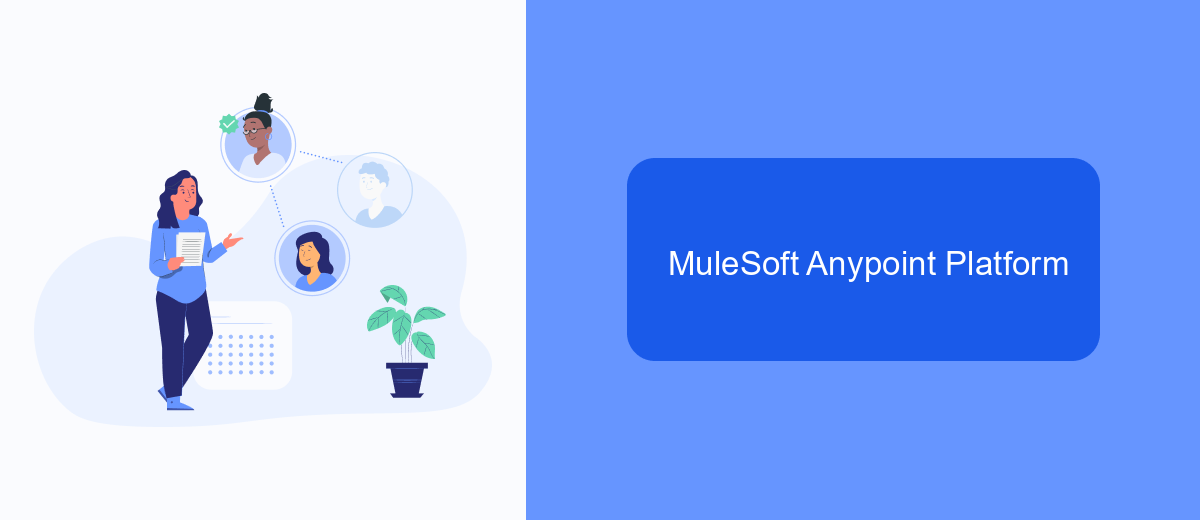MuleSoft, a widely-used integration platform, powers seamless connectivity between diverse systems and applications. Understanding the programming languages behind MuleSoft can provide deeper insights into its functionality and performance. This article explores the primary languages used in MuleSoft's development, shedding light on the technologies that make it a robust and efficient solution for enterprise integration needs.
What is MuleSoft?
MuleSoft is a comprehensive integration platform that enables businesses to connect applications, data, and devices across on-premises and cloud computing environments. It provides tools for designing, building, and managing APIs and integrations, making it easier to synchronize data and automate business processes.
- API Management: Create, publish, and manage APIs with ease.
- Data Integration: Connect disparate systems to streamline data flow.
- Cloud Integration: Seamlessly integrate cloud-based applications and services.
- On-Premises Integration: Connect legacy systems with modern applications.
One of the key features of MuleSoft is its ability to simplify complex integrations, making it an ideal solution for businesses looking to enhance their digital transformation efforts. Tools like SaveMyLeads can complement MuleSoft by providing pre-built integrations that automate data synchronization between various platforms, further reducing the time and effort required to manage integrations.
Programming Languages Used in MuleSoft

MuleSoft is primarily written in Java, which is one of the most popular programming languages for enterprise-level applications. Java's robustness, scalability, and extensive framework support make it an ideal choice for building MuleSoft's Anypoint Platform. This platform provides a unified solution for API management, design, and integration, allowing businesses to connect applications, data, and devices seamlessly. Additionally, the use of Java ensures that MuleSoft can leverage a wide range of libraries and tools, enhancing its functionality and performance.
Besides Java, MuleSoft also incorporates other programming languages to support various components and functionalities. For instance, the DataWeave language, which is a part of MuleSoft, is specifically designed for transforming data between different formats. JavaScript is also used for scripting and customization within the platform. These languages collectively enable MuleSoft to offer a versatile and powerful integration solution. For businesses looking to streamline their integration processes, services like SaveMyLeads can be utilized alongside MuleSoft to automate data flows and improve efficiency.
MuleSoft Enterprise Service Bus (ESB)

MuleSoft's Enterprise Service Bus (ESB) is a powerful and flexible integration platform that facilitates seamless communication between disparate systems and applications. By using Mule ESB, organizations can efficiently manage, orchestrate, and transform data across various channels, ensuring a smooth and consistent flow of information.
- Integration: Mule ESB supports a wide range of protocols and data formats, enabling seamless integration between different systems.
- Scalability: The platform is designed to handle high volumes of data and transactions, making it suitable for both small and large enterprises.
- Flexibility: Mule ESB offers a modular and extensible architecture, allowing organizations to customize and extend its capabilities to meet specific business needs.
- Security: The platform includes robust security features to ensure data integrity and confidentiality during transmission.
For businesses looking to streamline their integration processes further, services like SaveMyLeads can be incredibly beneficial. SaveMyLeads automates the process of capturing and transferring lead data from various sources, reducing manual effort and ensuring timely and accurate information flow. This complementary tool can enhance the efficiency of Mule ESB by automating routine tasks and allowing teams to focus on more strategic initiatives.
MuleSoft Anypoint Platform

MuleSoft's Anypoint Platform is a comprehensive integration solution that allows businesses to connect applications, data, and devices seamlessly. It provides a unified platform that combines data integration, API management, and connectivity to streamline business processes and enhance operational efficiency.
The platform supports a variety of integration patterns and offers tools for designing, deploying, and managing APIs. It enables organizations to create a network of applications and services, facilitating smooth data flow and communication between different systems.
- API Design and Management
- Data Integration
- Real-time Analytics
- Cloud and On-premise Connectivity
One of the key features of the Anypoint Platform is its ability to simplify complex integrations. Services like SaveMyLeads can be used in conjunction with MuleSoft to automate lead data transfer from various sources to CRM systems, ensuring that businesses can respond to customer inquiries promptly and efficiently.
Benefits of Using MuleSoft
MuleSoft offers numerous benefits for businesses looking to streamline their integration processes. One of the key advantages is its ability to connect disparate systems, whether on-premise or in the cloud, through its Anypoint Platform. This unified approach not only simplifies the integration landscape but also reduces the time and effort required to manage multiple systems. Additionally, MuleSoft supports a wide range of protocols and data formats, making it highly versatile and adaptable to various business needs.
Another significant benefit is the robust set of tools and pre-built connectors that MuleSoft provides. These tools facilitate the rapid development and deployment of integrations, allowing businesses to be more agile and responsive to changing market demands. For example, services like SaveMyLeads can be seamlessly integrated with MuleSoft to automate lead management processes, thereby enhancing efficiency and accuracy. Furthermore, MuleSoft's strong security features ensure that data is protected throughout the integration lifecycle, giving businesses peace of mind regarding their sensitive information.


FAQ
What programming language is MuleSoft written in?
Can I use MuleSoft with other programming languages?
Is it necessary to know Java to work with MuleSoft?
Are there tools to help automate and simplify MuleSoft integrations?
What are the benefits of MuleSoft's Java-based architecture?
If you use Facebook Lead Ads, then you should know what it means to regularly download CSV files and transfer data to various support services. How many times a day do you check for new leads in your ad account? How often do you transfer data to a CRM system, task manager, email service or Google Sheets? Try using the SaveMyLeads online connector. This is a no-code tool with which anyone can set up integrations for Facebook. Spend just a few minutes and you will receive real-time notifications in the messenger about new leads. Another 5-10 minutes of work in SML, and the data from the FB advertising account will be automatically transferred to the CRM system or Email service. The SaveMyLeads system will do the routine work for you, and you will surely like it.
